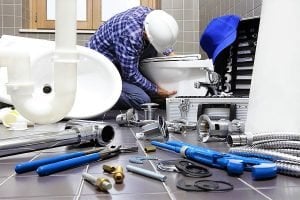 If you live in an area where it rains regularly, your home is at risk for flooding. To avoid these situations, it’s important to follow a few simple steps that will help protect your home from flood damage.
If you live in an area where it rains regularly, your home is at risk for flooding. To avoid these situations, it’s important to follow a few simple steps that will help protect your home from flood damage.
First, make sure to check your water heater and water lines for leaks or breakage. This can save you time and money by preventing costly repair bills.
Pipe Wraps
A house service line is a piping system that runs from the water main to all the fixtures in a home. It should be protected from freezing temperatures, which can cause the pipes to burst or break.
Insulating exposed pipes with foam insulation or newspaper can help prevent frozen pipes from bursting or breaking. You can also use an electrical heat tape to protect unheated areas of your home where pipes can be found.
The right type of pipe insulation will depend on what material the pipe is made of. Plastic pipes should be wrapped with automatic heat tape, which is insulated with heavy rubber around the wires.
Pipe wraps are cheaper and less visible than pipe collars, so they can be used for a variety of applications. They are especially useful when a pipe is too tight to be fitted with a pipe collar.
Plumber’s Epoxy
When a pipe leaks, it can be a big problem for residential and commercial property owners. Leaks can cause rusty, moldy or musty odors, damage to the drywall and flooring and can even lead to flooding inside a home.
One temporary fix for leaking pipes is plumber’s epoxy. It is a two-part, hand-moldable putty with a soft consistency that can be pushed into the damaged areas to form a watertight seal.
This two-part putty can be used on steel, copper, brass, masonry, plaster, brick, concrete, wood and ceramics. It can also be drilled, tapped, filed and sanded.
A good plumber’s epoxy will have WRAS approval to prevent contamination of drinking water when it is used on domestic pipes. It will have a high-quality resin that is non-toxic and resistant to shrinkage. It can be applied to dry or wet surfaces and will last for years.
Pipe Tape
The threads of pipes carrying water to and from your home’s fixtures and appliances are prone to becoming clogged with mineral deposits over time. This can cause a pipe to crack or burst, which can lead to massive flooding and significant water damage.
A common way to seal these threaded connections is with thread seal tape, a tough adhesive tape made of PTFE. This tape is a hydrophobic, non-stick, and non-wetting material. It is also resistant to high temperatures, making it suitable for use on metals such as galvanized steel and stainless steel.
A wide range of PTFE tapes are available to fit most pipe threads. They are available in various colors, widths, thicknesses, and densities to match different piping materials. Tapes that are higher in density prevent excess stretching during assembly, which can cause a leak path.
Water Heater
If you have a leaky pipe, it’s important to call in a professional plumber as soon as possible. This will ensure that the pipe is repaired properly and will avoid further damage to your home.
If your water heater has a leak or is old and not functioning properly, you may be at risk of house flooding. However, there are some steps you can take to minimize the amount of water that enters your home.
First, you should turn off the water supply to your home. This will prevent your home from getting flooded and reduce the risk of electrocution. You can also try using a shop vac to remove standing water from the area.
…
